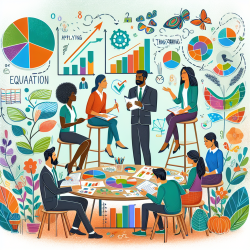Introduction
In the ever-evolving field of speech-language pathology, the integration of team science has become increasingly important. The study titled "Identifying strategies to promote team science in dissemination and implementation research" provides valuable insights into how practitioners can enhance their collaborative efforts to improve outcomes for children. This blog will explore the key strategies identified in the study and how they can be applied in practice.
The Power of Team Science
Team science involves collaborative efforts among scientists from various disciplines to achieve a common goal. In the context of dissemination and implementation (D&I) research, team science is crucial for translating scientific evidence into practical applications. The study highlights three primary strategies to promote effective team science:
- Developing and Maintaining Clear Expectations: Clearly defined roles and responsibilities are essential for team cohesion and productivity.
- Promoting and Modeling Effective Communication: Open and respectful communication fosters trust and collaboration.
- Establishing Shared Goals and Mission: A unified vision aligns team efforts and drives innovation.
Applying the Strategies in Practice
For practitioners in speech-language pathology, applying these strategies can significantly enhance the effectiveness of team-based interventions. Here’s how:
- Clear Expectations: Define roles for each team member, whether they are therapists, educators, or parents, to ensure everyone understands their contributions and responsibilities.
- Effective Communication: Encourage regular team meetings and create an environment where team members feel comfortable sharing ideas and feedback. Utilize technology for virtual meetings to include remote participants.
- Shared Goals: Collaboratively set goals that focus on the child’s developmental needs and ensure that all team members are aligned in their efforts to achieve these objectives.
Encouraging Further Research
While the study provides a solid foundation, there is always room for further exploration. Practitioners are encouraged to engage in research that examines the impact of these strategies in different settings and populations. By contributing to the body of knowledge, practitioners can help refine and adapt team science approaches to better serve diverse communities.
Conclusion
Embracing team science in dissemination and implementation research can lead to more effective interventions and improved outcomes for children. By implementing the strategies of clear expectations, effective communication, and shared goals, practitioners can enhance their collaborative efforts and drive innovation in their field.
To read the original research paper, please follow this link: Identifying strategies to promote team science in dissemination and implementation research.










